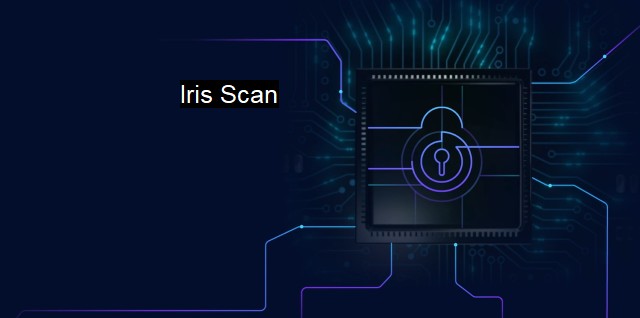What is Iris Scan?
Iris Scan Technology: Revolutionizing Cybersecurity with Precise and Accurate Biometric Authentication
Iris scanning is considered one of the most reliable and accurate forms of biometric identification. This security technique identifies individuals based on the unique patterns in their irises - the colored circles surrounding the pupils in the human eye.The Iris, unlike other easily replicable or changeable aspects like fingerprints or facial features, is an internal organ. Therefore, it's shielded from most of the external factors that could corrupt its unique structure. These may include ageing, surgeries or damage. What's more, the iris pattern takes shape when a person is merely ten months old and remains stable throughout the individual’s lifetime, increasing the reliability of this particular technique.
The iris scanning process works like this: A camera (equipped with subtle infrared illumination to capture images in variable lighting conditions) would take a high-resolution photograph of the eye. The computer algorithm then processes this image to locate the iris, define its boundaries, and analyze its details. The resulting pattern is converted into a mathematical code, essentially creating a "digital iris." This code is compared to all the codes in a privileged database for identification.
Unlike keycards or passwords susceptible to theft, fraud, or simple human forgetfulness, iris scanning capitalizes on the data already existent in humans' bodies, which eliminates any hassle concerning forgotten passwords or lost keycards. its uniqueness makes it less susceptible to false negatives or positives that could lead to security breaches.
Speaking about cybersecurity, iris scan finds its utilization prominently in access control systems, be it for entering a high-security building or logging into a secure network or system. This iris scan process ensures that only authorized personnel have access, thus contributing towards safeguarding sensitive data.
In the context of antivirus programs, iris scans could serve dual-factor or multi-factor authentication applications where cryptographic solutions might not be enough. when accessing particular sensitive areas on a network, the antivirus program might request an iris scan to ensure that an authorized user is making the move, thereby strengthening the systems' overall immunity to potential cyber threats.
Its uniqueness also presents potential applications as a core part of antivirus software and programs’ structure. For instance, the “digital iris” could be implemented as a form of constantly shifting code that malware or viruses find impossible to replicate or corrupt. With the database encrypted factoring in the uniquely inherent characteristics of the digital iris, the potential for malicious decompression of the database mitigates exponentially.
The use of iris scans raises valid privacy concerns. When one entrusts their biometric data to a system, they entrust them with an inherent aspect of their identity. If this information should fall into the wrong hands or be misused, the implications could be far-reaching and potentially non-reversible. Thus, as we embrace the benefits and advantages of advancements like iris scanning, it’s also vital to remain aware of the associated risks to ensure that as we sustain technological progress, we never compromise on privacy and individual security.
Iris scanning, due to its unique nature and its potential applications within the field of cybersecurity and antivirus programs, presages an era of secure biosafety measures. Notwithstanding security concerns, the future unveils intriguing possibilities for this eye-opening technology as we steadily usher in the coming of advanced biometric identification techniques.

Iris Scan FAQs
What is an iris scan and how does it relate to cybersecurity?
An iris scan is a biometric identification technology that captures and analyzes the unique patterns in the iris of an individual's eye. It is used in cybersecurity and antivirus to verify the identity of a user and grant access to secure systems or data.Is an iris scan more secure than traditional authentication methods like passwords and PINs?
Yes, an iris scan is considered to be a more secure form of authentication because the patterns in the iris are unique to each individual and cannot be easily replicated or stolen. Passwords and PINs, on the other hand, can be guessed, hacked, or stolen through various means.Can an iris scan be fooled or hacked?
While iris scans are generally considered to be very secure, they can be fooled or hacked under certain circumstances. For example, a high-quality photograph of an individual's eye could potentially fool an iris scanner. However, most iris scanning systems include additional security measures to prevent such attacks.Are iris scans commonly used in antivirus applications?
No, iris scans are not commonly used in antivirus applications. While they are often used in enterprise-level security systems for access control and identity verification, they are not typically used as a part of antivirus software. Antivirus software typically relies on other forms of authentication, such as passwords or biometric scans of fingerprints or faces.| | A | | | B | | | C | | | D | | | E | | | F | | | G | | | H | | | I | | | J | | | K | | | L | | | M | |
| | N | | | O | | | P | | | Q | | | R | | | S | | | T | | | U | | | V | | | W | | | X | | | Y | | | Z | |
| | 1 | | | 2 | | | 3 | | | 4 | | | 7 | | | 8 | | |||||||